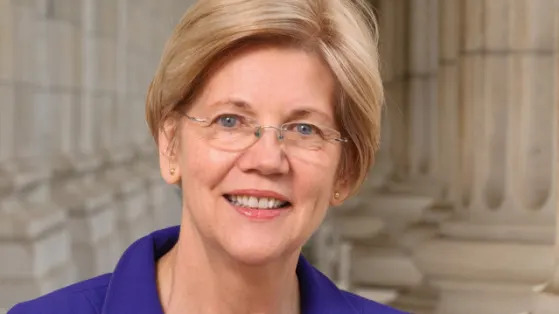(Bloomberg) -- Subscribe to Economics Daily for the latest news and analysis.
Donald Trump’s second term has begun with a renewed determination to curb the Federal Reserve’s treasured autonomy. Jerome Powell’s response so far: trying to draw a sharp line around monetary policy independence, even if it means appearing to give ground elsewhere.
The Fed chair’s balancing act comes as the Trump administration has moved to swiftly rein in the central bank’s autonomy on bank supervision, the president continues to pressure Powell to cut interest rates, and Republicans on Capitol Hill signal they will ramp up their oversight.
Powell has dealt with heightened scrutiny before, having navigated the Fed through the hostilities of Trump’s first term and a difficult inflation battle during the Biden administration. However, that period looks tame compared with the market chaos, inflation risks and presidential pressure this time.
For his part, Powell has ignored Trump’s calls to cut rates as markets convulsed in the wake of tariffs and will likely keep doing so given the risks of rising prices. But he has overseen several Fed moves to pull back in other contentious areas, including withdrawing from a global coalition on climate issues and removing some website pages referencing diversity and inclusion.
Inflation has been above the Fed’s target for four years, and central bankers aren’t going to cut rates on the first sign of weakness as they remain wary, based on their remarks and minutes from a March meeting.
On Tuesday, Trump said he had no intention of firing Powell despite his frustration that the Fed hasn’t moved quickly to lower rates. That came just days after National Economic Council Director Kevin Hassett said that Trump’s team would continue to study whether Powell could be fired by the president.
A spokesperson for the Fed declined to comment.
Proponents of central bank independence view it as critical for the institution to make necessary yet difficult monetary policy decisions.
“A mark of a successful country in the modern era has been an independent central bank,” Goldman Sachs Group Inc. Vice Chairman Rob Kaplan said Tuesday at the Bloomberg Sell-Side Leaders Forum. Kaplan is a former Dallas Fed President.
But former Vice Chair for Supervision Randal Quarles said Fed officials will have to get used to more political volatility — at least in bank oversight.
“The institution has to be willing to accept that many other things that are within its purview — its participation in the payment system, its regulation of banks, its regulation of other financial institutions, there are a range of tasks that have been given to the Fed — those are appropriately more subject to political influence,” he told Bloomberg News in a March podcast.
About a month after his inauguration, Trump issued an executive order that swept up regulation into White House review. While Fed governors vote on bank rules and a White House review may not change the vote, some say the presumption that the Fed’s decisions should proceed unquestioned in a variety of areas is over.
“Whatever independence the Fed had in bank regulation is now gone,” said Karen Shaw Petrou, the managing partner at Federal Financial Analytics, a Washington-based consulting firm.
Michelle Bowman, Trump’s nominee for Fed vice chair of supervision, defined what this transition from full autonomy might look like: cooperation with the administration.
Pressed at an April 10 Senate Banking Committee hearing about how she interpreted the executive order, Bowman said “we need to provide an analysis that supports rulemakings that we put forward.”
She told lawmakers that she didn’t think there would be challenges with rulemakings.
Bowman was nominated for the role after Michael Barr reversed course and announced in January that he would step down as the Fed’s top bank cop, avoiding a potential fight with Trump over the position.
Growing Risk
Although monetary policy was protected in Trump’s recent executive order, contentious fights around supervision are a growing risk for the Fed.
Trump has installed agency heads who are pivoting toward his goals on financial regulation, with Treasury Secretary Scott Bessent meeting key officials privately. The Fed’s board will be casting votes on proposals that will show whether they are in sync with that new direction.
Powell, in the meantime, is changing course where he can as the administration seeks to reshape the federal government.
While it was already in retreat from a global coalition of central banks aimed at “greening the financial system,” the Fed published a press release on its withdrawal three days before the inauguration.
After Trump issued an executive order in January ending DEI programs across the government, the Fed took down pages on its website dedicated to diversity and inclusion.
The Fed chair promised to examine Republican claims about so-called “debanking,” or the practice of depriving some individuals and businesses of banking services.
As the changes continue to reverberate, questions remain about how Powell, nominated by Trump in 2017 to serve as chair, will navigate future challenges.
“Powell’s termination cannot come fast enough!” Trump said on social media last week, language that helped rattle global markets. Trump’s comments on Tuesday about not firing Powell came after interventions from Bessent and Commerce Secretary Howard Lutnick, the Wall Street Journal reported.
‘Congress Is Your Boss’
The central bank isn’t just facing issues with the White House.
In the Senate, Wyoming Republican Cynthia Lummis has taken direct aim at Fed staff and is probing how they handled oversight of financial companies involved in digital assets.
“The Constitution says Congress is your boss, but somehow your staff have not gotten that message,” she told Powell at a hearing earlier this year.
In the House, Financial Services Committee Chairman French Hill has said a hard look at the Fed’s handling of inflation is at the “top of my list.”
Some lawmakers appear to have a keen interest in protecting monetary policy from White House influence.
“Everybody has a tendency to encourage and urge, but the Fed in my lifetime has maintained a level of independence,” House Republican Frank Lucas told Axios. Lucas is chair of a Financial Services Committee task force looking at monetary policy.
“I have great faith in President Trump, but he’s not always going to be president — and we have to do the things that reflect whoever or whatever comes after him in the future,” Lucas said.
Critics say greater scrutiny of the Fed was bound to happen given its actions on emergency lending in crises and quantitative easing that involved gobbling up significant amounts of US Treasury debt. Some of that criticism has come from individuals now in senior roles, such as Dan Katz, who serves as Bessent’s chief of staff, and Stephen Miran, now chair of the White House Council of Economic Advisers.
“The Fed has moved beyond its traditional narrow, technocratic role and instead has pursued a much more expansive monetary and regulatory agenda that is more consistent with an explicitly political institution,” Katz and Miran wrote in a report last year for the New York-based Manhattan Institute. “Policy accountability has been absent.”
--With assistance from Saleha Mohsin and Max Abelson.





